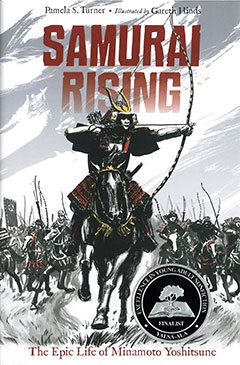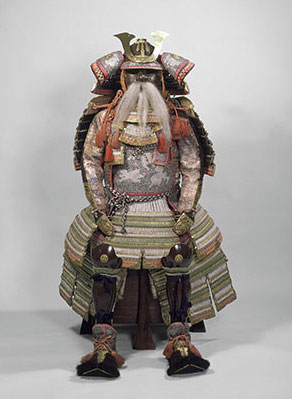 Don’t be alarmed by the ghoulishness of my title. Trying to resurrect the life of someone who turned to dust centuries ago is a challenge, especially if the person left behind no personal writings such as letters or diaries. But it can be done. In preparation for writing Samurai Rising: The Epic Life of Minamoto Yoshitsune, I read all the academic and primary sources I could find about late-twelfth-century Japan. And while what-happened-when is the basis of biography, you can challenge students (or adults) to dig deeper. If you really want to try to get into the head of the long dead, go beyond the obvious. Try answering these questions.
Don’t be alarmed by the ghoulishness of my title. Trying to resurrect the life of someone who turned to dust centuries ago is a challenge, especially if the person left behind no personal writings such as letters or diaries. But it can be done. In preparation for writing Samurai Rising: The Epic Life of Minamoto Yoshitsune, I read all the academic and primary sources I could find about late-twelfth-century Japan. And while what-happened-when is the basis of biography, you can challenge students (or adults) to dig deeper. If you really want to try to get into the head of the long dead, go beyond the obvious. Try answering these questions.
What did this person believe was going to happen after they died?
No, I don’t mean what they thought might happen to their kingdom or their reputation. I mean: did they believe in an afterlife? How would such a belief (or lack of belief) color their perception of the world? Twelfth-century Japanese of Yoshitsune’s social class were Buddhists. In all likelihood, at the very end of his life Yoshitsune accepted that his fate was determined by karma (the sum of good and bad deeds during his current and past lives). He hoped that his next life would be kinder and he would be reunited with his friends and family.
What assumptions did this person have about their place in society?
In other words … there was probably something about this person’s role or status that they never questioned. What was it?
We are all members of human society. Each society, in each time period, has some underlying assumptions that are rarely (if ever) questioned. Nobody in Yoshitsune’s time questioned the notion that the Emperor was semi-divine … or that some people were better than others because of their imperial descent … or that loyalty should be based on bloodlines. I think it’s safe to say that Yoshitsune enthusiastically believed in his own superiority. If you insisted to him that “all human beings are equal” he would’ve thought you were nuts.
(Extra credit if you can articulate an assumption from contemporary culture that may seem really bonkers to your great-great-great-great grandchildren.)
How was this person impacted by technology (or lack of it)?
Here’s an example. The technology of warfare in twelfth-century Japan demanded that samurai leaders display personal bravery and credible martial skills. In those days you had to get up close and personal to kill your enemy — within ten yards to be really accurate in horseback archery, and much closer with spear or sword. There were no guns, no cannons, no sitting in HQ and phoning orders to your troops. To be an effective leader Yoshitsune had to be willing to risk his life.
What’s underneath all that armor?
What kind of underpants did this person wear?

Someone actually asked me this about Yoshitsune. Amusingly trivial? Well, as it turns out, you can’t answer the question without an understanding of the material culture specific to the society and time period. So here we go.
When Yoshitsune was an apprentice monk, he would have worn a loincloth (a strip of cloth wrapped and tied around his privates). It would’ve been made of hemp cloth because that’s what poor people used as fabric in twelfth-century Japan. (Cotton wasn’t introduced until centuries later.) When Yoshitsune was older and living in Hiraizumi, Kamakura, and Kyoto, he would have had clothes benefitting his status, and high-status Japanese wore silk. However, I strongly suspect that when dressed in full armor, wearing a loincloth under his hakama (wide-legged trousers) would’ve made relieving himself quite a hassle. In that case I think Yoshitsune would’ve gone commando.
See how much fun biographical research is?

I thoroughly enjoyed this post. I loved Samurai Rising!